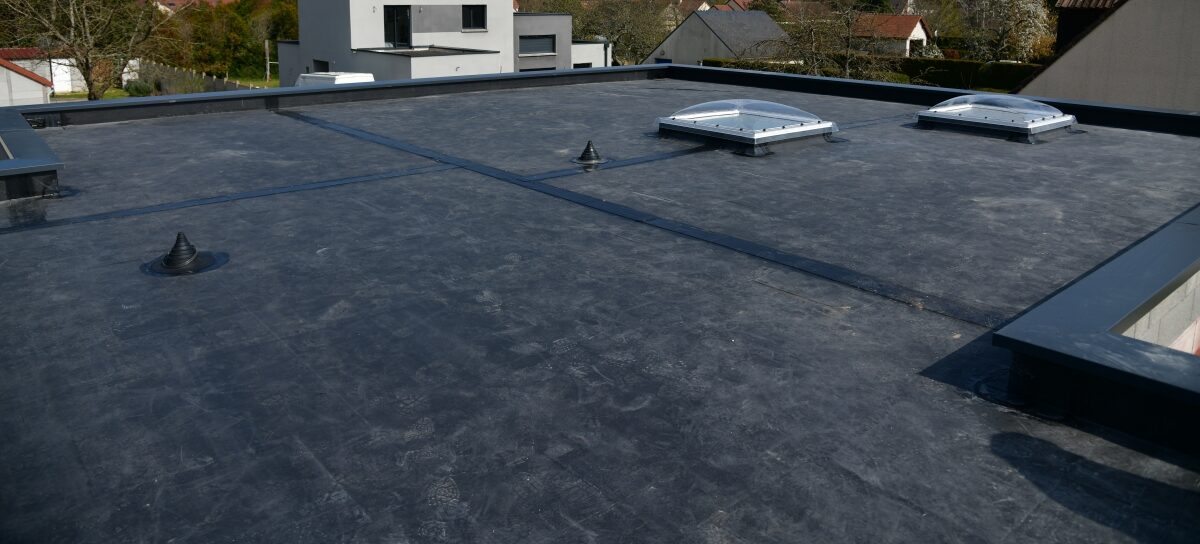EPDM roofs have been in use since the 1960’s all around the US on flat and low slope roofs. This type of roof is a synthetic rubber product that comes in a wide variety of sizes to cover a roof, and in some cases can be ordered to cover an entire roof area seamlessly depending on the size of the roof. EPDM can be purchased in white color, leading to more reflectivity than the standard black color that was used for years. This can be important in high sun and heat areas like Tucson and Phoenix, whereas black can be used in cooler areas like Flagstaff or northern Arizona to help with heat absorption in winter.
ABOUT EPDM
EPDM is a single-ply membrane roofing system, and can be installed directly to a smooth roof deck, or similar to other membrane systems, installed over insulation board, taper board, and coverboard. These components can help with overall building energy efficiency in the extreme temperature regions of Arizona.

There are many different suppliers and manufacturers of TPO membrane, including Carlisle Syntec, Johns Manville, Holcim Elevate, and several smaller brands. M&M Roofing is experienced in installing all types of EPDM across Arizona. EPDM comes in many thicknesses, including 45mil, 60mil, and 90mil. EPDM is a synthetic rubber material that is more resistant to hail and other types of physical damage than other types of flat roofing like TPO.
EPDM roofing has become used less and less on commercial roofs with the advancements in TPO systems and PVC roofs, but it’s still a solid choice for roofs.
THE EPDM ROOFING SYSTEM
EPDM is used by both homeowners and commercial roofers alike on low slope applications. It can be adhered directly to a roof deck, or installed over a multi-layer insulation system, like other single ply membranes.
One of the main differences between EPDM and PVC or TPO is the seam connections. In EPDM, seams are chemically glued together with a seam compound that fuses two sheets of EPDM together, whereas with TPO and PVC, the seams are heat welded together. This can lead to a weaker seam if not done correctly.
Flashings around pipes and other roof penetrations are made of a different material, unlike PVC and TPO. Often this is where failings in the roof system start to occur – if you are having issues with your rubber roof leaking here in Arizona, please give us a call and we can make a repair or change out the entire roof.
ABOUT M&M ROOFING
M&M Roofing has been installing low slope roof systems across Arizona since 1984. We service the entire state, including Tucson, the Phoenix metro (Queen Creek, Gilbert, Chandler, Phoenix, Tempe, Scottsdale, Glendale, Goodyear, Avondale, Peoria and outlying areas), Prescott, Flagstaff, Kingman, and everywhere in between. Give us a call to schedule a free consultation.

